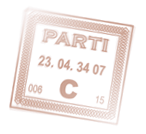As I said:
Don’t expect to get good noise free charts while you are in a Marina. Other boats generate RF noise which is picked up by your ground system and fed into the radio.
You must be at sea for clean weatherfax charts. You also may be generating RF interference from your own machinery, so you must electrically isolate these devices from your radio. The noisiest devices are inverters and charge controllers for the batteries. Also refrigeration pumps, and computer power blocks. Poor quality lights can be a problem. And autopilots. Alternators produce a lot of RF.
It is very troublesome to try and stop the RF at the device that’s causing it. The best plan is to isolate the radio and antenna from the ship’s power. This means a separate battery, and charging system for the radio. And moving the radio as far as possible from the engine room, pumps etc.
Disconnecting the RF ground from the boat system grounds (power and electrolysis prevention) is vital. You must keep the RF ground out of the cabin and isolate it from the system grounds.
The ground plane for the antennae will pick up RF noise. The bigger the ground plane that is within the hull, the more noise it will pick up. Your ground plane should be outside the hull. Engine blocks, copper screens, and internal resonant wires (such as in the KISS system,) are going to introduce RF noise into the radio, and into adjacent wires leading to instruments by capacitive and magnetic coupling. Whatever wires you connect to the radio should not be bundled with other wires.
The “antenna” is going to consist of the wire between the tuner and the backstay, the backstay itself, other metal parts close by (mast, shrouds, metal halyards, topping lifts etc.) And whatever is connected to the ground nut on the radio and the antenna tuner. This may include system ground and all wires that connect to the negative of the battery, engine block, alternator, and any metal that is connected that is within a few feet of the antenna tuner or radio. All these things constitute the antenna as far as the radio is concerned. The radio reverses the antenna current every half cycle and thinks the ground plane is meant as the primary radiator during one half cycle - which means it is trying to communicate via your engine block and refigerator! This is not a good idea. Firstly because the ground is close to the water which absorbs the signal, secondly because the RF energy gets broadcast into all your electronics, which can damage some devices.
The bottom 30% of the radiating element (wire from the antenna tuner and isolated backstay) provides most of the RF signal. If you had installed the tuner within the hull and ran a wire to reach the backstay lower insulator, most of the RF would be radiating into the boat. At 20MHZ frequency, only the first 3 feet of this wire does much good as an antenna. When the RF energy reaches the 10 foot point it gets sucked back into the tuner and passed onto the ground wires. In this case most of the backstay is unused. At lower frequencies, such as the 8MHZ marine band, the effective length of the antenna radiator is about 23 feet, which is one reason that ICOM recommends a 23 foot whip antenna.
Using the Engine and other things as a ground
Some marine books suggest using the engine block, through hulls, and boats bonding system as an RF ground, though there is disagreement amongst the authors as to which item is the most significant. Although all these devices will collect some of the RF current , the current then flows through just about every wire and piece of electronic gear on the boat through connected wiring, causing interference problems as described before. If you did this you would also find that other equipment on the boat such as: alternators, inverters, battery chargers, fans, computers, and printers, introduced electrical noise into the transceiver via the common ground wires. This noise would make it harder for you to hear weak signals. (On String of Pearls I can switch the ships ground in or out of the RF ground circuit circuit, and have noticed as much as 2 'S' units (6dB) difference in background noise level).
Don't connect the lightning protection path to the RF ground system (the stay/shroud you are using for the antenna should not be grounded - see recommendations under LIGHTNING PROTECTION for how to handle this).
Using the keel as a ground?
Other authors suggest using the lead keel as an RF ground. This is not very effective on most sailboats for two reasons: First, the RF current returns to the boat mostly along the surface of the sea -it doesn't get down to the depth of the keel - so the keel can't collect much current.. Second, the keel is so far away from the transceiver, that the connecting wire between the keel and the transceiver becomes a poor radiator (inside the boat!), rather than a ground connection. This situation becomes worse as the transceiver is adjusted to transmit on higher frequencies.
Imagine the poor quality radiator the keel would make. Use the keel as part of your lightning protection path only.








